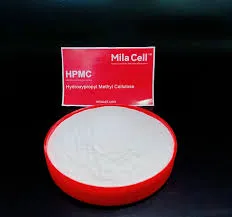
Αυγ . 21, 2024 01:14 Back to list
Exploring the Properties and Applications of HEC Cellulose in Various Industries
HEC Cellulose Properties, Applications, and Benefits
Hydroxyethyl cellulose (HEC) is a cellulose derivative widely used in various industrial applications due to its remarkable properties. As a water-soluble polymer, HEC is derived from cellulose, which is a natural polysaccharide sourced from cotton or wood pulp. Through a chemical process known as etherification, hydroxyethyl groups are introduced to the cellulose structure, enhancing its functionality and expanding its range of applications.
One of the primary advantages of HEC is its excellent thickening and stabilizing capabilities. When dissolved in water, HEC forms a viscous solution that effectively increases the viscosity of various formulations. This property makes HEC an essential ingredient in industries such as pharmaceuticals, food, cosmetics, and construction. In the pharmaceutical sector, HEC is often used in gel formulations, providing a smooth texture and improving the stability of active ingredients. Its biocompatibility and non-toxicity make it suitable for use in topical applications and as a drug delivery agent.
HEC Cellulose Properties, Applications, and Benefits
The cosmetic and personal care industry also greatly benefits from hydroxyethyl cellulose. It is frequently used in lotions, creams, shampoos, and other personal care products. HEC provides emulsification stability, ensuring that oil and water-based ingredients do not separate. Additionally, its film-forming properties can enhance the sensory experience of cosmetics, leaving a smooth and pleasant feeling on the skin. Its ability to retain moisture makes it an effective humectant, helping to keep skin hydrated.
hec cellulose

In the construction industry, HEC is employed as an additive in cement-based formulations, such as tile adhesives and joint compounds. Its thickening properties improve the workability and adhesion of construction materials, making it easier for professionals to apply these products. Moreover, HEC contributes to the longevity and durability of construction materials, providing resistance to cracking and shrinkage.
HEC's versatility extends beyond these traditional applications. With the growing interest in sustainable and eco-friendly products, HEC presents an attractive option for manufacturers. Being derived from renewable resources, it fits well into the ethos of environmentally conscious consumers and companies. Moreover, HEC is biodegradable, reducing the environmental impact associated with its use.
Despite its numerous advantages, it is essential to consider some limitations of HEC. Its solubility is pH-dependent, and certain formulations could affect its performance. Manufacturers must thoroughly understand the specific properties required for their applications to ensure effective use of HEC.
In conclusion, hydroxyethyl cellulose is a remarkable polymer with diverse applications across various industries. Its unique properties, such as thickening, stabilizing, and film-forming abilities, make it a valuable ingredient in pharmaceuticals, food, cosmetics, and construction. As the demand for sustainable and innovative solutions continues to rise, HEC is poised to play an integral role in shaping future products while maintaining the balance between performance and environmental responsibility. With ongoing research and development, we can expect to see even more exciting applications for this versatile cellulose derivative in the years to come.
-
Versatile Hpmc Uses in Different Industries
NewsJun.19,2025
-
Redispersible Powder's Role in Enhancing Durability of Construction Products
NewsJun.19,2025
-
Hydroxyethyl Cellulose Applications Driving Green Industrial Processes
NewsJun.19,2025
-
Exploring Different Redispersible Polymer Powder
NewsJun.19,2025
-
Choosing the Right Mortar Bonding Agent
NewsJun.19,2025
-
Applications and Significance of China Hpmc in Modern Industries
NewsJun.19,2025







